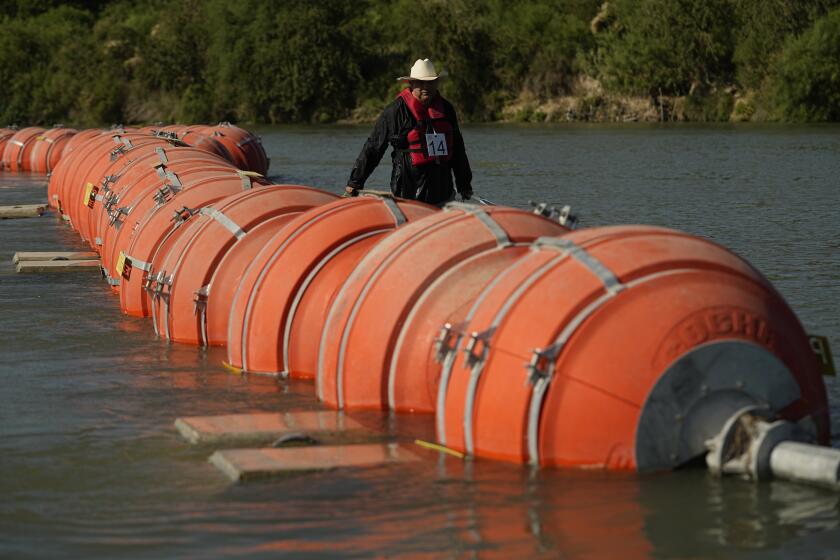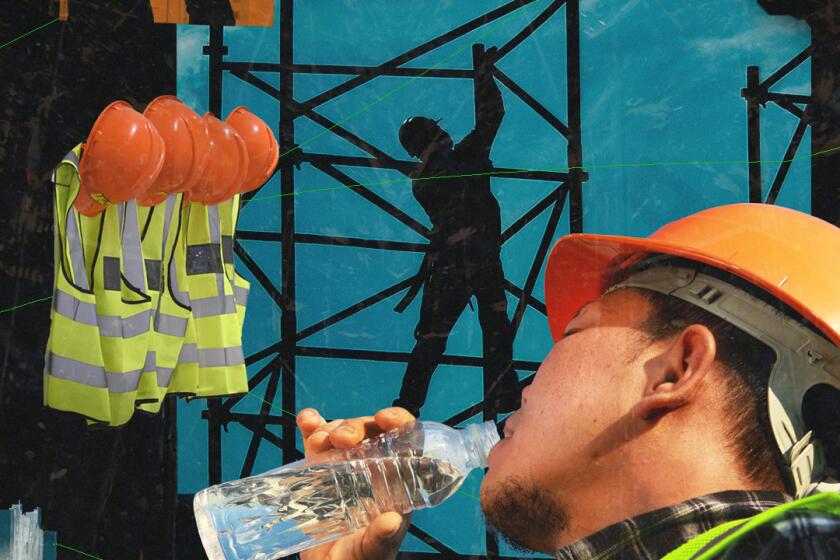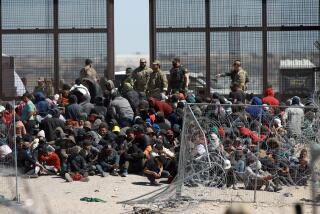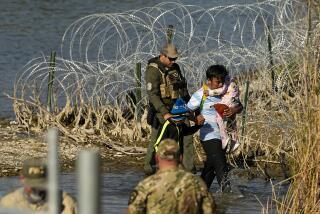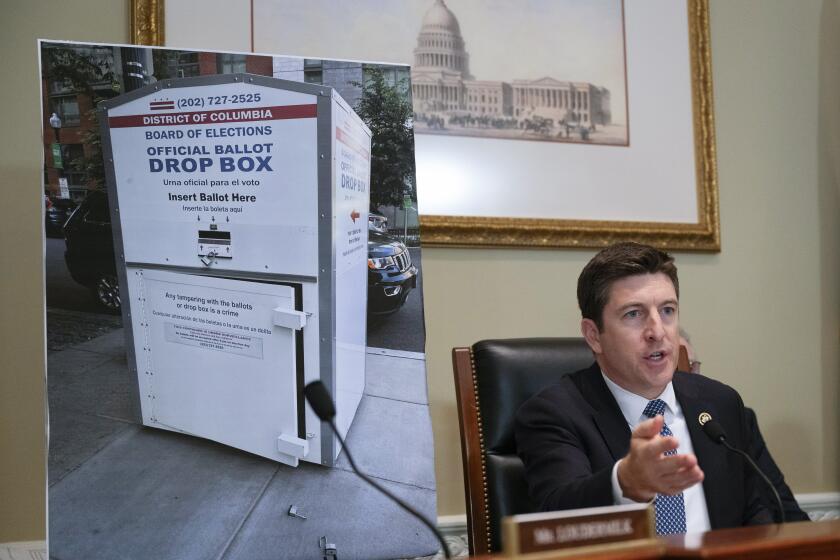
When Jessie Fuentes was growing up, Eagle Pass was a slice of heaven. He grew up fishing, barbecuing and exploring along the banks of the Rio Grande. Now in his early 60s, he’s spent his life on the water, kayaking and canoeing down most of the rivers in Southwest Texas.
But the river he loves the most, the one in his backyard, has irrevocably changed. “It used to be heaven, but now it’s hell,” he says.
As part of Operation Lone Star, a border security initiative launched by Gov. Greg Abbott in 2021, Eagle Pass is one of 58 counties near the Texas-Mexico border under a disaster declaration as a result of rising border crossings. The operation has been both costly — a 2022 analysis estimated that it costs Texas taxpayers roughly $2.5 million each week— and controversial.
The reported incidents have coincided with Texas Gov. Greg Abbott’s push for intense border security efforts through his Operation Lone Star initiative.
Since its implementation, Operation Lone Star has drawn criticism from environmentalists, advocacy groups and lawmakers, and has become the focus of multiple lawsuits questioning its constitutionality. Over the last two years, the state has deployed thousands of Texas National Guard soldiers across its 58 counties, where they’ve been directed to arrest and detain migrants for state trespassing.
In Fuentes’ hometown, these efforts haven’t just manifested in the increased presence of law enforcement, but also in the implementation of concertina wire, a makeshift wall of shipping containers, and most recently, a floating barrier of wrecking-ball-sized river buoys outfitted with serrated blades.
The buoys are the latest facet of the operation to present legal challenges for Abbott. On Sept. 6, a federal judge issued a preliminary injunction against the state in a lawsuit filed by the U.S. Justice Department, ordering that the buoys be removed by Sept. 15. Abbott immediately appealed the decision, and the following day, a federal appeals court granted the state’s request to leave the floating barrier until a final ruling was issued.

Fuentes, a former schoolteacher, has owned and operated a kayaking business named Epi’s Canoe & Kayak Team since 2015. Since the placement of the buoys, Fuentes has been cut off from the regular boat ramp he used for his expeditions, but he has been able to gain temporary access in order to transport a handful of journalists to see the floating barrier.
During these trips, he says he has seen migrants in distress trying to get help from the state troopers and National Guardsmen nearby.
“It’s one of the most traumatic things a person can witness,” says Fuentes. “You see people being marched up and down the river until they fall or they get tired. My original concern was what they were doing to the river, but then I saw what they were doing to the people.”
Over the years, Fuentes has grown used to the idea that Eagle Pass is misunderstood. The further he drifts away from the border, the region he’s always called home often becomes something else to other people. For politicians and pundits who have never been or didn’t grow up there, Eagle Pass is suddenly seen as dangerous, “overrun,” or “under siege” from surges of migrants.
Since 2021, the perception that Eagle Pass is a town on the front lines of an illegal immigration crisis has been used to justify a policy that’s made parts of the city unrecognizable. Fuentes knows that, on some level, he can’t change the minds of people who believe this narrative, but recently, he’s become more determined to fight against those who are capitalizing on those fears.
A federal judge has ordered Texas to move a large floating barrier to the bank of the Rio Grande by Sept. 15.
Back in June, Fuentes reached his limit when he noticed that one of his favorite islands in the river had been bulldozed to accommodate a border security land post. As a result, he joined the Eagle Pass Border Coalition — a local advocacy group that’s been a vocal opponent of Operation Lone Star.
“I’ve seen our peaceful little community turned into a staging area for hate and for the inhumane treatment of individuals,” he says. “I call this Operation Lasting Shame.”
In July, Fuentes sued Abbott, the Department of Public Safety and the Texas Military Department over the damage to his business. For him, though, it’s about much more than that. Earlier this month, he joined other members of the community in organizing a week of action to stand against Operation Lone Star, including a vigil for the lives lost at the border.
Though some Eagle Pass residents are in favor of stymieing illegal immigration, the realities of Operation Lone Star have many Eagle Pass residents feeling as though Abbott has gone too far.
But if these community members want to push back on Abbott’s efforts, they’ll be gearing up to fight an ideological battle that some would argue began more than a century ago.
In the 1920s, xenophobic anxieties and hysteria surrounding rising numbers of immigrants entering the country were mounting across the U.S. In response, the passage of the Immigration Act of 1924 created the U.S. Border Patrol and established a restrictive country-based quota system that set the tone for the country’s immigration policy for the ensuing decades.
Over the next 40 years, attitudes and policies directed at Mexican immigrants were complex and often at odds with each other.
The Bracero Act of 1942 allowed Mexican laborers to enter and work in the country on short-term contracts, consequently increasing the number of undocumented workers entering the country. And while the U.S. needed Mexican workers to address labor shortages, tensions between citizens and undocumented immigrants led to increased deportations, culminating with the introduction of Operation Wetback in 1954.
In a sweeping reversal, the Pulitzer Prize Board will accept submissions from non-U.S. citizens but the change will not go into effect until 2025.
Hundreds of immigration and Border Patrol officers were sent to the border, where they staged mass deportations of individuals who were sent back to Mexico on bus, train and boat.
In 1965, the passage of the Immigration and Nationality Act charted a new path for the country’s immigration policies, abolishing the discriminatory quotas. And while the ensuing decades were punctuated by occasional periods of amnesty toward Latin American immigrants, it was 9/11 that ushered in our modern era of border enforcement.
Though President Bush had been engaged in talks with Mexico to introduce a series of landmark immigration reforms in the summer of 2001, these plans were scrapped following the terrorist attacks. Instead, the United States cracked down on immigration. The Homeland Security Act of 2002 established the Department of Homeland Security, which restructured previously disparate government agencies and functions, and placed them under the umbrella of DHS, leading to the creation of U.S. Immigration and Customs Enforcement and U.S. Customs and Border Protection — the largest investigative and law enforcement arms of DHS.
In the 20 years since, government spending on immigration enforcement has increased dramatically, from less than $5 billion in 2000 to $25.1 billion in 2020. This escalation in spending has gone toward the funding of immigration detention centers, an increase in ICE and CBP officers, and the construction of the border wall.
Democrats and Republicans have largely adhered to the strategy of prevention through deterrence, a policy formally implemented in 1994 that sought to discourage migrants from crossing the border by implementing barriers that would funnel them through increasingly dangerous and remote areas.
It’s a strategy that’s not only proven ineffective but has been criticized by humanitarian groups and immigrant advocates who point out the thousands of deaths it has caused in the years since its adoption.
Lawmakers and construction worker advocates are asking for federal regulations to prevent more heat-related deaths.
Robin Reineke, assistant professor of anthropology at the University of Arizona and co-founder of the Colibrí Center for Human Rights, spent over a decade working with the Pima County medical examiner to help identify the bodies of migrants who had been found along the U.S.-Mexico border. Her work has made her a vocal critic of prevention through deterrence, which she says seems to be the exact strategy driving Operation Lone Star.
“People come across the border and they’re facing a very dangerous geography,” she says.
“They’re pushed into remote areas of the desert, and the circumstances of their deaths are absolutely horrible. With some of the escalations we’re seeing in South Texas right now, there’s a precedent for Border Patrol having a level of comfort with migrant deaths every single year.”
Last month, Operation Lone Star sparked public outcry when a body was found along the floating barrier. This incident came after the Houston Chronicle reported on an email from a state trooper alleging that he was directed not to give water to asylum seekers, and had been ordered to “push” migrants back into the water.
In response to the claims, Abbott’s office issued a statement, saying that “no orders or directions have been given under Operation Lone Star that would compromise the lives of those attempting to cross the border illegally.”
They also added, “Until President Biden reverses his open border policies and does his job to secure the border, Texas will continue protecting Texans and Americans from the chaos along the border.”
Militarizing the border has largely been a winning strategy for Texas politicians, one that Mary Mendoza, a historian of the U.S.-Mexico borderlands at Penn State, says plays directly into the long-standing fears Americans have about immigration.
For decades, the Olympic Auditorium was a hub for sports and entertainment in Southern California. A new interactive exhibit aims to preserve its history.
“It perpetuates the idea that immigrants are a threat, that they’re dangerous, that they’re something to be feared,” Mendoza says. “It perpetuates racist stereotypes, not only of immigrants but of people of Latin American descent. It’s very damaging for people living in the United States who want to find opportunities and make a better life for themselves, and it adds to divides within families and within communities.”
Miguel Levario, associate professor of U.S. history at Texas Tech University, specializes in the study of the U.S.-Mexico borderlands. His book “Militarizing the Border: When Mexicans Became the Enemy,” examines the origins of the stereotypes and fears Mendoza mentioned. Spanning 1895 to 1940, the book explores a time when intense militarization efforts in Texas were focused on Mexican immigrants, and the echoes of those policies today.
Abbott has pushed back on criticism of Operation Lone Star, citing nearly 400,000 migrants who have been apprehended under the program. But Levario points to an incident in his hometown of El Paso as an example of how these successes come with a toll.
Just last month, a National Guard member shot and wounded a man on the Mexican side of the river.
“When you start increasing the presence of authoritative entities — in this case, the military — their purpose is to protect the country from invasion, harm or violence,” Levario says. “When you put that in the context of the borderlands, who are they protecting us from? The immigrants. They’re the imminent danger. That’s the only conclusion that the public can come to: Immigrants pose a security threat, and therefore, the military is necessary.”
Like Levario, Fuentes can’t help but feel like his city has been turned into a kind of war zone. “You can’t go anywhere without seeing signs of militarization,” Fuentes says. “It’s not just my business. [Abbott’s] creating a real environment for hate — he showed up here in force, put gates around our public park, there are soldiers and troopers everywhere.”
The people of New Mexico were the first victims of the atomic bomb, the result of the Manhattan Project’s Trinity Test on July 16, 1945.
And though Operation Lone Star has sparked national headlines and even legal challenges, it’s clear to Levario that Abbott is unlikely to back down. “How do you convince people who are seeking power to not use a strategy that is proven to be beneficial?” Levario asks. “If you want to be president, or if you want to be governor, or you want to be senator, you have to attract a certain base, especially in Texas. If you want that conservative base, then you have to speak about immigration in this way.”
Still, Levario believes that border communities will start banding together to push back. “These barriers are an affront to our culture,” he says. “We are not a divided culture; our communities across the border are interdependent. What Abbott is doing is not sustainable. It’s political theater at the expense of human lives. You put up razor wire for show along the border thinking it’s just going to cause some ruckus and then die down, except an innocent person dies.”
Having spent his whole life by the water, Fuentes also has hope that the tides are slowly changing. At a news conference hosted by the Eagle Pass Border Coalition earlier this month, there was a large turnout with people from Huntsville all the way to El Paso voicing their disagreement with the operation.
“People are tired of the border being denigrated and used for a political narrative,” he says. “We’ve lived here all our lives. I’m an old guy, and I’ve lived a good life. I didn’t plan on being thrust into an incredible issue like this, but this river is something that I grew up with. My dad grew up with it. My grandpa grew up with it. I have to do what’s right.”
Cat Cardenas is a Latina writer and photographer based in Austin. Her work has appeared in Rolling Stone, New York Magazine, Harper’s Bazaar, GQ and other publications.

